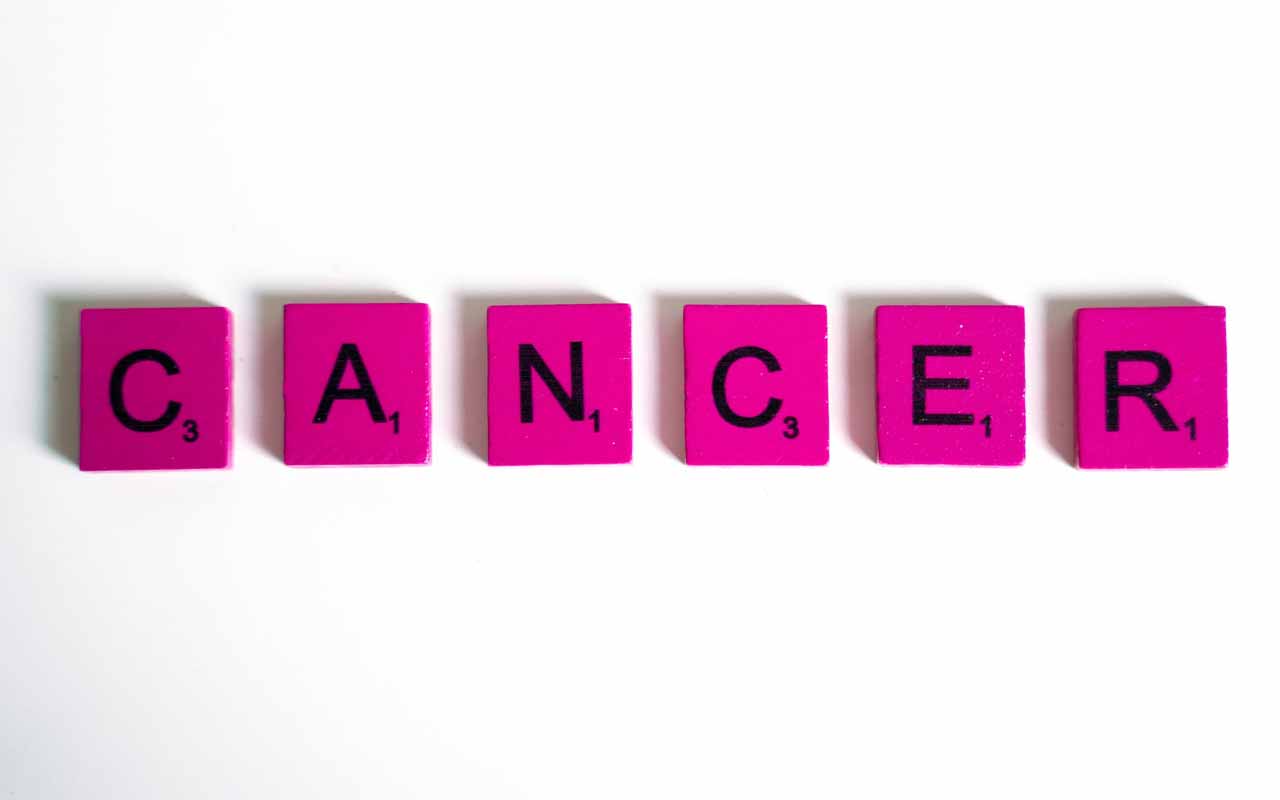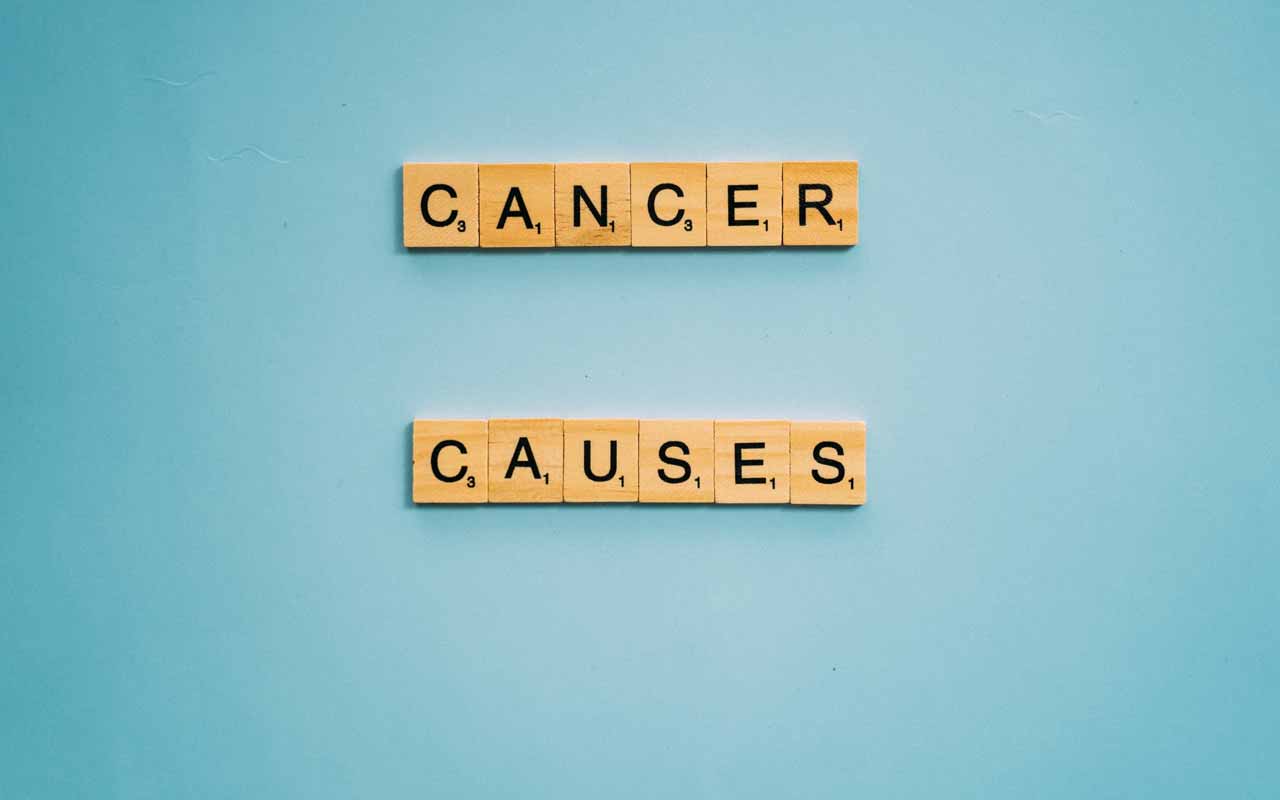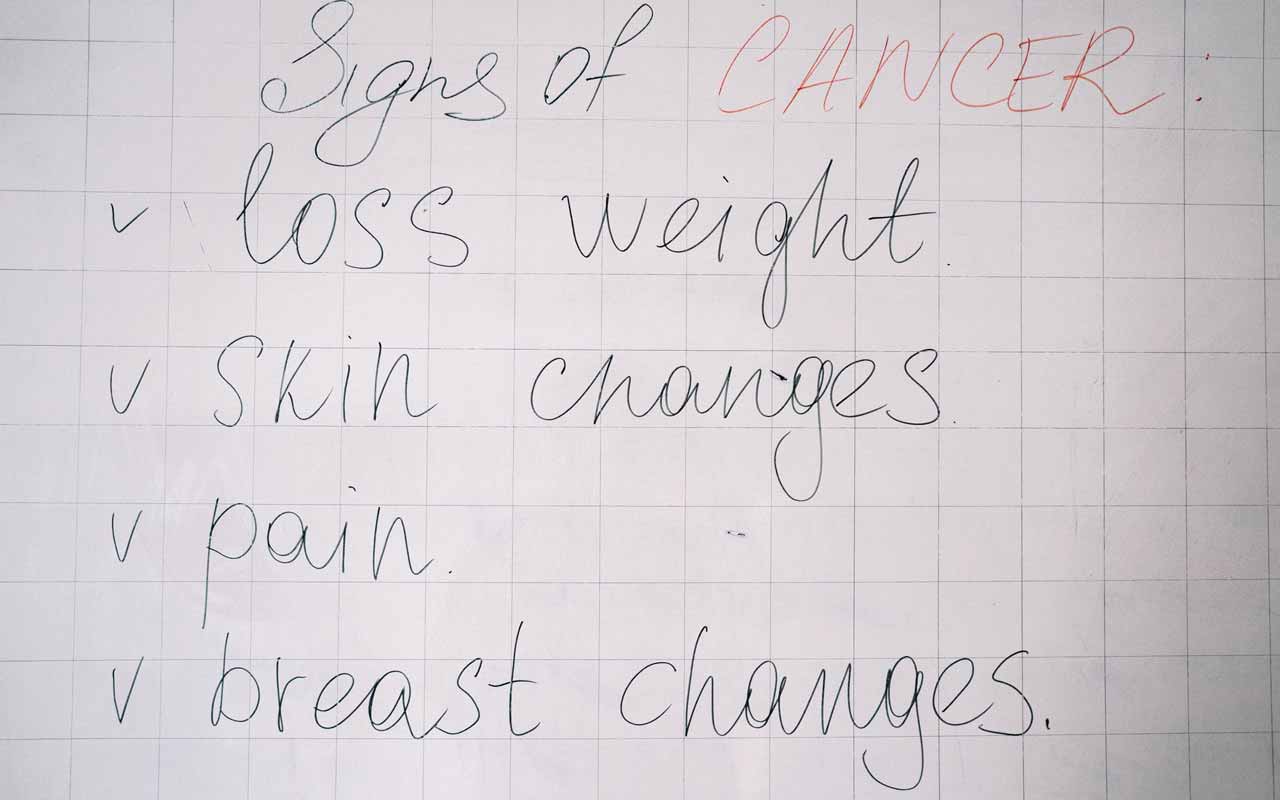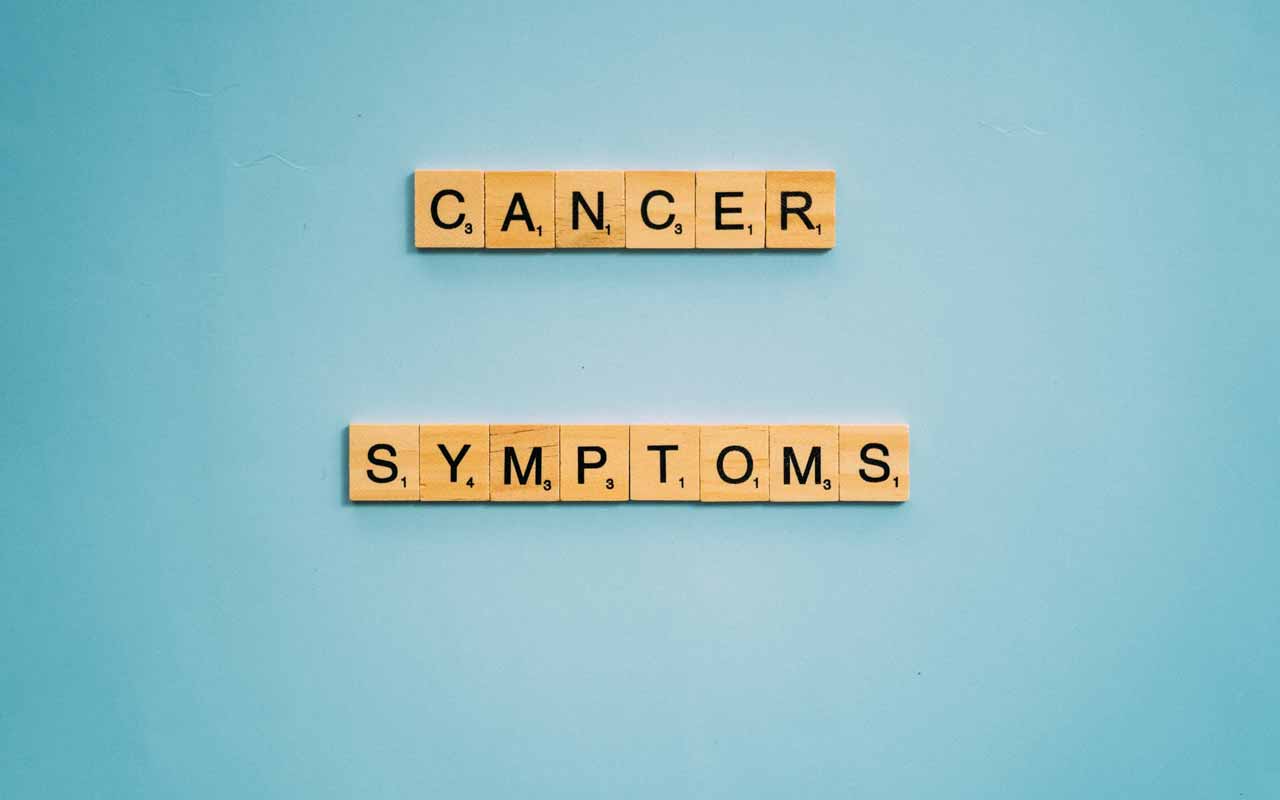Cancer is the term given to a large group of diseases that vary in type and location. . It is a disease caused by the loss of control over a cell’s reproduction capacity.
Rather than dividing in a controlled and programmed manner, the cell continues to divide and multiply abnormally, until a detectable lump or tumor develops.
It is the result of a continuous, abnormal, and relatively autonomous cell proliferation, which is due to the permanent alteration of some cells that get transmitted to the cell family.
Cancer is a class of diseases or disorders characterized by an uncontrolled division of cells and the ability of these cells to invade other tissues, either by direct growth into adjacent tissue through invasion or by implantation into distant sites by metastasis.
Metastasis is defined as the stage in which cancer cells are transported through the bloodstream or lymphatic system.
Cancer cells are very similar to cells of the organism from which they originated and have similar (but not identical) DNA and RNA.
This is the reason why they are not very often detected by the immune system, in particular, if it is weakened.
These cells usually have an increased ability to divide rapidly and their number of divisions is not limited by telomeres on DNA (a counter system to limit the number of divisions to 40-60).
This can lead to the formation of large masses of tissue and in turn, may lead to disruption of bodily functions due to the destruction of organs or vital structures.
This type of disease may affect people of all ages, but the risk tends to increase with age, due to the fact that DNA damage becomes more apparent in aging DNA.
The unregulated growth that characterizes this disease is caused by damage to DNA, resulting in mutations to genes that encode for proteins controlling cell division.
Many mutation events may be required to transform a normal cell into a malignant cell.
These mutations can be caused by chemicals or physical agents called carcinogens, by close exposure to radioactive materials, or by certain viruses that can insert their DNA into the human genome.
Mutations occur spontaneously and may be passed down from one generation to the next as a result of mutations within germ lines. It is one of the principal causes of death in developed countries.
There are many types of cancer. The severity of symptoms depends on the size and character of the malignancy and whether there is metastasis. A definitive diagnosis usually requires the histologic examination of tissue by a pathologist. This tissue is obtained by biopsy or surgery. (Cancer Misdiagnosis)
Most diseases can be treated and cured, depending on the specific type, location, and stage. Once diagnosed, cancer is usually treated with a combination of surgery, chemotherapy, and radiotherapy. As research develops, treatments are becoming more specific for the type of cancer pathology.
Drugs that target specific cancers already exist for several cancers. If untreated, cancers may eventually cause illness and death, though this is not always the case. Check out the UK’s leading Chase Templeton, the private medical insurance specialists broker for individual and business private health insurance quotes.
Table of Contents
Causes of Cancer
The majority of cancers are sporadic. The causes of cancer, any type of cancer are unknown and unclear. There is no clear cause why one person gets cancer and another does not. Cancer develops over time when certain normal genes start mutating. Such cells multiply rapidly and become malignant. These gene mutations occur due to a complex mix of factors related to lifestyle, heredity, and environment.
A risk factor is anything that increases a person’s chance of developing cancer. Different cancers have different risk factors. Many forms of cancer are associated with exposure to environmental factors such as tobacco smoke, radiation, alcohol, and certain viruses. While some of these risk factors can be avoided or reduced, there is no known way to entirely avoid the disease. Luckily, there are law firms like Baron and Budd that will represent you if an environmental factor like asbestos is the cause of your cancer.
Up to 85 percent of cancers can be prevented by avoiding environmental risk factors like smoking, sun exposure, alcohol abuse, and poor nutrition. Use of tobacco, certain diets, alcohol, exposure to ultraviolet (UV) radiation, and to a lesser extent, exposure to disease-causing agents (carcinogens) in the environment and the workplace are some of the potential catalysts of cancer.
It is important to remember, however, that these factors increase a person’s risk but do not always “cause” the disease.
The known risk factors for cancer include:
- Radiation
- Ultraviolet (UV) Radiation
- Viruses
- Chemicals
- Tobacco
- Alcohol
- Diet
Twenty percent of cancers are hereditary. This means that the abnormal gene responsible for causing this type of disease is passed from parent to child, posing a greater risk for that type of cancer in all descendants of the family. However, just because someone has a cancer-causing gene doesn’t mean they will automatically get cancer.
Signs of hereditary cancer include:
- Genetics
- Ethnic Groups
- Family History
Types of Cancer
There are more than 200 types of cancer. Any substance that can cause a normal cell to become abnormally developed could cause cancer. The following are the main categories of cancer-related agents or causative agents: chemical and toxic compound exposures, some pathogens, and human genetics.
The most common types of cancer are as follows:
More Common Cancers
- Breast
- Prostate
- Lung and Bronchus
- Colon and Rectum
- Urinary Bladder
- Non-Hodgkin Lymphoma
- Melanomas of the Skin
- Kidney and Renal Pelvis
- Pancreas
- Oral Cavity and Pharynx (Head & Neck)
- Ovary
Less Common Cancers
- Stomach
- Thyroid
- Brain
- Multiple Myeloma
- Esophagus
- Liver and Intrahepatic Bile Duct
- Cervix
- Larynx
- Acute Myeloid Leukemia
- Chronic Lymphocytic Leukemia
- Soft Tissue including the Heart
- Hodgkin Lymphoma
- Testis
- GIST (Gastro-Intestinal Stromal Tumors)
- Small Intestine
- Chronic Myeloid Leukemia
- Acute Lymphocytic Leukemia
- Anus, Anal Canal, and Anorectum
- Vulva
- Gallbladder
- Pleura, Malignant Mesothelioma
- Bones and Joints
- Hypopharynx
- Eye and Orbit
- Nose, Nasal Cavity, and Middle Ear
- Nasopharynx
- Ureter
- Peritoneum, Omentum, and Mesentery
- Gastrointestinal Carcinoid Tumors
Cancer Symptoms or Signs of Cancer
Although cancers differ greatly, there are a few cancer symptoms that are commonly experienced by most cancer patients. Identify mesothelioma symptoms and varying types of mesothelioma.
These most common cancer symptoms include:
- Persistent Fatigue is one of the most commonly experienced cancer symptoms. It is usually more common when the cancer is advanced but still occurs in the early stages.
- Pain is normally present when cancer has progressed. However, it can be indicative early on of some cancers, such as bone cancers.
- Fever: Most cancer patients experience a fever at some point. It may be due to the disease affecting their immune system, cancer itself, or a response to treatment. Fever normally occurs as cancer progresses.
- Unintentional Weight loss: Losing 10 or more pounds without dieting or intending to lose weight can be one of the first symptoms experienced with cancer.
- Some types of skin lesions or changes to the skin such as jaundice, darkening of the skin, abnormal hair growth, reddening, and skin itchiness can indicate certain types of cancers.
Therefore taking all the above cancer signs into consideration, roughly cancer symptoms can be categorized into three groups:
- Local symptoms: unusual lumps or swelling (tumor), hemorrhage (bleeding), pain, and/or ulceration. Compression of surrounding tissues may cause symptoms such as jaundice.
- Symptoms of metastasis (spreading): enlarged lymph nodes, cough, and hemoptysis, hepatomegaly (enlarged liver), bone pain, fracture of affected bones, and neurological symptoms. Although advanced cancer may cause pain, it is often not the first symptom.
- Systemic symptoms: weight loss, poor appetite and cachexia (wasting), excessive sweating (night sweats), anemia, and specific paraneoplastic phenomena, i.e. specific conditions that are due to active cancer, such as thrombosis or hormonal changes.
There are over one hundred different types of cancer. They are all unique with their own symptoms and characteristics. Each cancer affects the body in a different way. Every single item in the above list can be caused by a variety of conditions. The following are symptoms that may occur in some most common cancer types:
- Breast: A lump or thickening of the breast; discharge from the nipple; change in the skin of the breast; a feeling of heat; or enlarged lymph nodes under the arm.Learn more about the signs and information about breast cancer at raising awareness about breast cancer
- Bladder: Blood in the urine, pain or burning upon urination; frequent urination; or cloudy urine
- Bone: Pain in the bone or swelling around the affected site; fractures in bones; weakness, fatigue; weight loss; repeated infections; nausea, vomiting, constipation, problems with urination; weakness or numbness in the legs; bumps and bruises that persist
- Brain: Dizziness; drowsiness; abnormal eye movements or changes in vision; weakness, loss of feeling in arms or legs or difficulties in walking; fits or convulsions; changes in personality, memory or speech; headaches that tend to be worse in the morning and ease during the day, that may be accompanied by nausea or vomiting
- Colorectal: Rectal bleeding (red blood in stools or black stools); abdominal cramps; constipation alternating with diarrhea; weight loss; loss of appetite; weakness; pallid complexion
- Kidney: Blood in urine; dull ache or pain in the back or side; lump in kidney area, sometimes accompanied by high blood pressure or abnormality in red blood cell count
- Lung: Early symptoms and signs of lung cancer may include one or all of the following: Wheezing, persistent cough for months; blood-streaked sputum; persistent ache in the chest; congestion in the lungs; enlarged lymph nodes in the neck. Of course, there are many other common lung diseases that can have the above symptoms. You should not worry too much and should see a doctor as soon as any of the above symptoms appear.
- Leukemia: Weakness, paleness; fever and flu-like symptoms; bruising and prolonged bleeding; enlarged lymph nodes, spleen, liver; pain in bones and joints; frequent infections; weight loss; night sweats
- Ovarian: Abdominal swelling; in rare cases, abnormal vaginal bleeding; digestive discomfort
- Oral: A lump in the mouth, ulceration of the lip, tongue, or inside of the mouth that does not heal within a couple of weeks; dentures that no longer fit well; oral pain, bleeding, foul breath, loose teeth, and changes in speech
- Prostate: Urination difficulties due to blockage of the urethra; bladder retains urine, creating frequent feelings of urgency to urinate, especially at night; bladder not emptying completely; burning or painful urination; bloody urine; tenderness over the bladder; and dull ache in the pelvis or back
- Pancreatic: Upper abdominal pain and unexplained weight loss; pain near the center of the back; intolerance of fatty foods; yellowing of the skin; abdominal masses; enlargement of liver and spleen
- Stomach: Indigestion or heartburn; discomfort or pain in the abdomen; nausea and vomiting; diarrhea or constipation; bloating after meals; loss of appetite; weakness and fatigue; bleeding – vomiting blood or blood in the stool
- Uterine: Abnormal vaginal bleeding, a watery bloody discharge in postmenopausal women; painful urination; pain during intercourse; pain in the pelvic area
Cancer Cure
Cancer is unpredictable and uncanny, it may be lurking within a body and the body wouldn’t know.
Many a time it is a minor ache, quietly ignored and quickly discarded in the past. But later is pernicious, lethal, and detrimental to life. Such is the effect of cancer.
But thanks to the advances made today by clinical research, cancer cures and alternative cancer treatment are available.
The choice of particular alternative cancer treatment depends on the stage of the cancerous tumor. Traditional or conventional treatment options may include surgery, radiation, chemotherapy, hormone therapy, and immunotherapy. These therapies have all been tested in clinical research trials and proven to be acceptable, safe, and effective, although with often unpleasant side effects.
Depending on the type of the disease, these cancer cures are used alone or in combination, to either control cancer cell growth or to eliminate the disease entirely.
Cancer Treatment
Surgery
In general, cancer is entirely removed by surgery, but this is not always possible. It becomes difficult when this disease has metastasized to other sites in the body prior to surgery, complete surgical excision is usually impossible.
There are several surgical procedures for cancer treatment which include mastectomy for breast cancer and prostatectomy for prostate cancer. The goal of the surgery can be either the removal of only the tumor or the entire organ.
Recurrence is a process where a single cancer cell is invisible to the naked eye but can grow again into a new tumor. For this reason, the pathologist will examine the surgical specimen to determine if a margin of healthy tissue is present, thus decreasing the chance that microscopic cancer cells are left in the patient.
Surgery in addition to the removal of the primary tumor is often necessary for staging. Staging is a process of. determining the extent of the disease and whether it has metastasized to regional lymph nodes. It is a major determinant of prognosis and of the need for adjuvant therapy.
Occasionally, surgery is necessary to control symptoms, such as spinal cord compression or bowel obstruction. This is referred to as palliative treatment.
If you’re interested in medical treatments abroad, read about the options Ichilov hospital has to offer.
If you’ve suffered from medical negligence, and this has led to a form of cancer, or during an operation, the doctor did not treat you professionally, then you may wish to talk to a solicitor.
Chemotherapy
The goal of chemotherapy is to destroy disease-causing cells. Many cancer patients will receive chemotherapy sometime during the course of their disease. The decision to administer chemotherapy is made based on its potential for destroying these cells, which is weighed against the risk of side effects from treatment as well as the risk of not receiving treatment at all.
General Issues of Chemotherapy include:
- Administration: Chemotherapy is in a variety of ways, including by mouth, intravenously, and/or intramuscularly. The route depends on the specific chemotherapy agent, as well as other patient and disease factors.
- Schedule: chemotherapy treatments also vary according to the agent(s) used, the disease, and other factors. Frequently, chemotherapy is administered in 1-2 day cycles that are repeated every four weeks.
The mechanism of chemotherapy, in general, is it works by interrupting cell growth and division. Different agents interact with the cell and its DNA in different ways. While the particular form of chemotherapy that is administered is selected for its activity against specific cancer, most chemotherapy also interrupts normal cell growth and division.
The side effects of treatment can sometimes be unpleasant, but most are temporary and subside once the treatment is completed.
Radiation therapy
Normal cells are programmed to stop reproducing (or dividing) when they come into contact with other cells. Radiation therapy specifically acts against cells that are reproducing rapidly. Tumors are made up of cells that are reproducing at abnormally high rates In the case of a tumor; this stop mechanism is missing, causing cells to continue to divide over and over. It is the DNA of the cell that makes it capable of reproducing.
Radiation therapy uses high-energy x-rays to damage the DNA of cells, thereby killing the diseased cells, or at least stopping them from reproducing. Radiation also damages normal cells, but because normal cells are growing more slowly, they are better able to repair this radiation damage than cancer cells.
In order to give normal cells time to heal and to reduce a patient’s side effects, radiation treatments are typically given in small daily doses, five days a week, over a six-or seven-week period. It is estimated that more than 50% of cancer patients will receive radiation at some point during their treatment.
You could launch an Irwin Mitchell medical negligence compensation with Irwin Mitchell if you have suffered any sort of clinical malpractice
Hormone Therapy:
It works by interfering with the production or action of particular hormones. Hormones are naturally produced substances that act as chemical messengers to assist in the normal control and functions of the body’s cells. For example, estrogen can promote breast cancer growth, and anti-estrogen drugs such as Tamoxifen are used to inhibit this process. However, an overdose of prescription drugs can cause addiction, though this is not always the case.
Most Americans ask for prescription medications to deal with critical health problems and to manage their quality of life. Unfortunately, some of the life-saving drugs can be proved costly. We always need accessible, safe healthcare solutions to be available to all. In Canada, prescription or brand name drugs are more affordable than in the US. Hence, most Americans are tempted to buy drugs from Canada due to its close proximity or order online from Canadian pharmacies such as Canadian Pharmacy Link.
Immunotherapy:
Cancers and many cancer treatments have an immunosuppressive action, that is, they reduce our ability to naturally fight cancer. Immunotherapeutic drugs work by strengthening the immune system, which is the body’s natural defense mechanism.
Autologous Stem Cell Transplant or Bone Marrow Transplant
Autologous transplants are the most common method used to treat leukemias, myelodysplastic syndrome, multiple myeloma, Hodgkin’s disease, non-Hodgkin’s lymphoma, testicular cancer, and neuroblastoma apart from other treatments.
Bone marrow is a spongy substance found inside our large bones, such as the femur (thigh), hip, and ribs. It is made up of cells called hematopoietic stem cells. It is these cells that are given (transplanted) to the patient during a stem cell transplant.
Autologous means structures or cells derived from the same body on which a transplant has to be done. Many people think a transplant has to be something taken from a donor, but that would be called an Allogeneic transplant. An autologous stem cell transplant is when the patient himself is the donor.
Clinical Trials
Clinical trials, also called research studies, test new treatments in people with this disease. The goal of this research is to find better ways to treat cancer and help cancer patients.
Clinical trials test many types of treatment such as new drugs, new approaches to surgery or radiation therapy, new combinations of treatments, or new methods such as gene therapy.
A clinical trial is one of the final stages of a long and careful cancer research process. The search for new treatments begins in the laboratory, where scientists first develop and test new ideas. If an approach seems promising, the next step may be testing a treatment in animals to see how it affects cancer in a living being and whether it has harmful effects.
Of course, treatments that work well in the lab or in animals do not always work well in people. Studies are done with cancer patients to find out whether promising treatments are safe and effective.
New treatments also may have unknown risks, but if a new treatment proves effective or more effective than the standard treatment, study patients who receive it may be among the first to benefit.
Cancer Prevention
Cancer prevention is defined as active measures to decrease the incidence of cancer. This can be accomplished by avoiding carcinogens or altering their metabolism, pursuing a lifestyle or diet that modifies cancer-causing factors, and/or medical intervention (chemoprevention, treatment of pre-malignant lesions).
Much of the promise for cancer prevention comes from observational epidemiologic studies that show associations between modifiable lifestyle factors or environmental exposures and specific cancers. Evidence is now emerging from randomized controlled trials designed to test whether interventions suggested by the epidemiologic studies, as well as leads based on laboratory research, actually result in reduced disease incidence and mortality.
Modifiable cancer risks include alcohol consumption, smoking, physical inactivity, and being overweight. Based on epidemiologic evidence, it is now thought that avoiding excessive alcohol consumption, being physically active, and maintaining recommended body weight may all contribute to reductions in the risk of certain cancers. If you are a smoker you should try to quit as soon as possible using a smokeless cigarette can start the quitting process.
However, compared with tobacco exposure, the magnitude of the effect is modest or small and the strength of evidence is often weaker. Other lifestyle and environmental factors known to affect cancer risk (either beneficially or detrimentally) include certain sexually transmitted diseases, the use of exogenous hormones, exposure to ionizing radiation and ultraviolet radiation, and certain occupational and chemical exposures, and infectious agents.
A weak or non-functioning immune system, poor health, an unhealthy environment, and advanced age (over 80) can contribute to the disease. In the majority of people, the disease can be prevented with a proper lifestyle which consists of a low-entropy diet, exercise, sleep, stress reduction, etc. In most cases, this disease develops slowly over many years. With a positive change of lifestyle and a healthy environment, this trend can be reversed in the majority of cases – cancer will shrink and eventually disappear.




